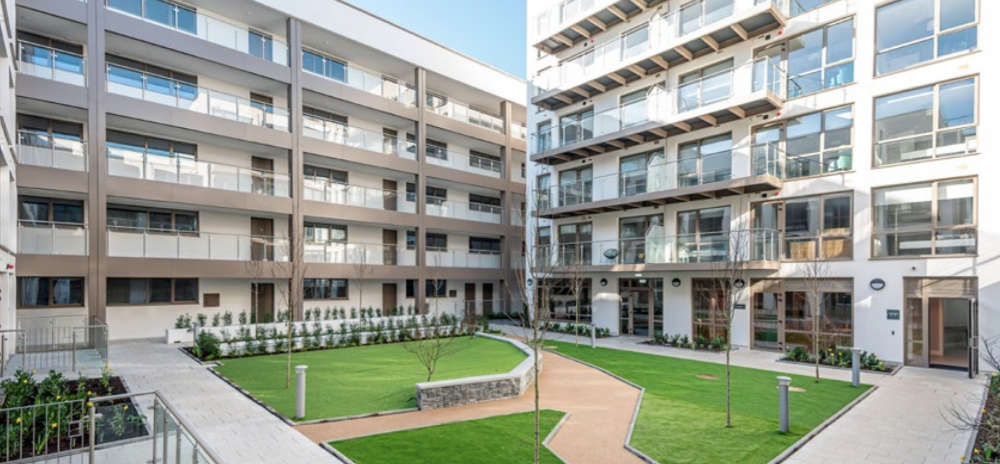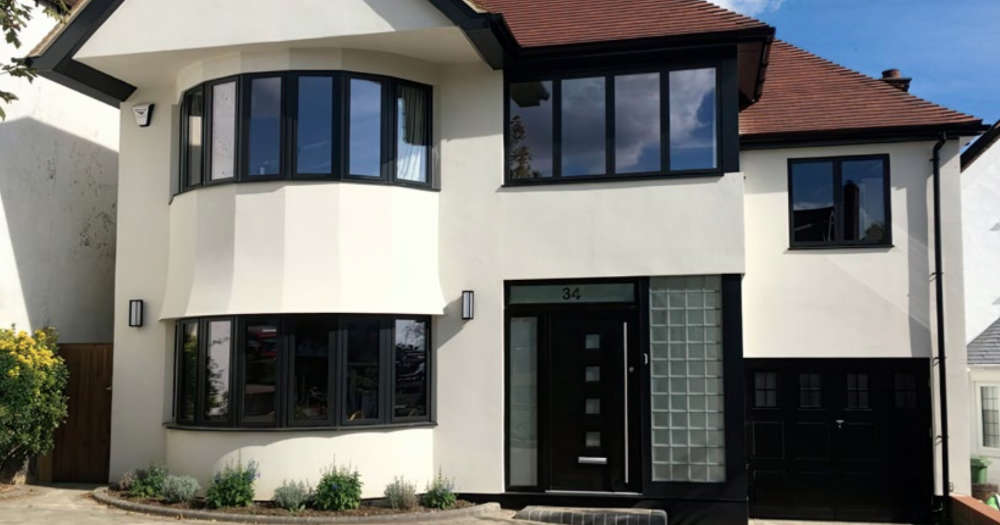Benefits of breathable external wall insulation
Contents |
[edit] The importance of external wall insulation
When it comes to solid wall constructed buildings, choosing the right insulation system is crucial. With greater awareness of the need for energy efficiency and more understanding of a materials breathability, increasingly property owners and building engineers are turning to external wall insulation (EWI). This article looks at why breathable EWI offers a number of important benefits.
[edit] Understanding breathability in external wall insulation
When we talk about the breathability of building materials, we are referring to the ability of moisture to pass through the walls without becoming trapped. When this moisture is trapped inside a building it can lead to condensation and mould growth and with it poor indoor air quality.
This moisture inside the home is generated by everyday activities, such as cooking and bathing as well as people breathing, amongst others. It has long been understood that breathable materials allow for the free movement of this moisture to the outside, reducing issues, such as condensation and dampness.
Breathable external wall insulation systems are designed to promote the interaction of moisture with the building fabric and ensure it can travel through the structure. This relationship between moisture and insulation, particularly with solid walls, is essential for the structural health and performance of the building.
One of the primary concerns when it comes to solid wall insulation – both in new build and refurbishment projects – is the risk of interstitial condensation. Condensation occurs when warm air comes into contact with a surface that is cooler, causing the moisture in the air to condense into water. Interstitial condensation, on the other hand, happens when water vapour reaches a point that is 2-3 degrees cooler and condenses within the structure of the building.
If insulation materials slow down the escape of moisture or are non-breathable, they can inhibit the ability of moisture to escape from the building fabric. This can lead to serious issues with interstitial condensation, dampness, mould, rot and structural damage.The challenge with interstitial condensation is that it often occurs inside the walls, making it difficult to detect and control.
[edit] The Importance of breathable wall insulation
Thermal performance is a critical consideration when selecting an external wall insulation system. The goal is to ensure that the temperature across the entirety of the insulation system remains higher than the dew point temperature of the water vapour. This means keeping the walls warm enough to prevent condensation.
To achieve this, vapour control layers can be installed on the warm side of the insulation to slow the rate of vapour entering the wall. However, it is crucial to eliminate thermal bridging to avoid cold spots in the walls where condensation can gather. Additionally, a well-planned ventilation strategy and regular heating during colder weather are essential for maintaining warmer walls and preventing condensation.
One of the primary advantages of using natural, breathable external wall insulation is its ability to significantly improve the energy efficiency of a building, whilst avoiding the problems with trapped moisture internally. By also reducing heat loss through the walls, these breathable insulation systems create a more comfortable living environment.
A major benefit of external wall insulation when renovating existing buildings with solid walls is that it allows the walls to contribute to the thermal mass of the building, storing and releasing heat. By also using insulation materials with high thermal mass properties, such as wood fibre, the insulation system can absorb and release heat, creating a ‘thermal store’ effect that helps to even out temperature fluctuations. That means houses with good external insulation using components with a high mass are better at storing energy and optimally balancing temperature fluctuations.
In addition to enhancing energy efficiency, breathable external wall insulation systems act as a protective barrier against the elements, preventing moisture ingress and providing additional sound insulation. This can be particularly beneficial for properties located in busy urban environments or areas with harsh weather conditions.
Unlike internal wall insulation, which requires space within the property, external wall insulation does not reduce internal floor area. This preservation of internal space is particularly beneficial for properties with limited square footage, allowing your clients to maximise living areas without compromising on energy efficiency.
It is worth bearing in mind that adding a layer of insulation to the external walls, the overall lifespan of the wall can be extended. The insulation system helps to protect the underlying structure from the effects of weathering and temperature fluctuations, reducing the risk of damage and deterioration. This can result in cost savings over time by minimising the need for repairs and maintenance for your client.
[edit] Choosing the right breathable external wall insulation system
When selecting a breathable external wall insulation system, several factors should be considered. These include the insulation material, compatibility with the existing wall structure, the aesthetic finish, plus long term performance.
Natural, breathable insulation materials, such as wood fibre, are excellent choices for achieving breathability and thermal performance in external wall insulation systems. Wood fibre insulation can hold a significant amount of water vapour without compromising its thermal capabilities or structural integrity. It gradually releases any stored moisture as the external temperatures improve, creating a dry and healthy internal environment.
We have also developed EPS external wall insulation boards featuring our OpenAir technology. This ensures high vapour permeability, enabling it to be released externally. This provides a unique, highly breathable insulation system with all the installation advantages of standard EPS boards.
For architectural technology professionals, it is essential to ensure that the chosen external wall insulation system is compatible with the existing wall structure. Different systems may have specific requirements in terms of fixing methods, surface preparation, and compatibility with other building components. Consulting with our technical team can help determine the most suitable system for each project.
The aesthetic finish of the external wall insulation system is another important consideration. Choice of render or cladding can significantly impact the visual appeal of the property. Lime-based renders are often recommended for their natural, eco-friendly and breathable properties.
[edit] The way forward
Natural, breathable external wall insulation systems can provide long-term cost savings through reduced energy costs and maintenance. By allowing moisture to escape from the building fabric, these insulation systems prevent the build-up of moisture and condensation, creating a healthier indoor environment and reducing the risk of mould growth.
We can therefore see that breathable external wall insulation systems offer numerous advantages for properties with solid walls. From improved energy efficiency and comfort to enhanced weatherproofing and sound resistance, these systems provide effective solutions to the challenges of insulating solid walls.
By choosing insulation materials such as wood fibre and EPS, property owners and building engineers can create a breathable and sustainable environment while preserving the integrity of the building fabric.
With the right EWI insulation system in place, buildings with solid walls can act like a battery, absorbing, storing and releasing energy. It creates spaces with a high thermal storage mass, meaning overheating in summer is much slower to occur, and heat is retained internally during the colder months.
We are passionate about raising awareness of the benefits of EWI and have developed a CPD titled: How external wall insulation improves energy efficiency and wellbeing – the proof.
This article appears in the AT Journal issue 149, SPRING 2024 as 'How external wall insulation improves energy efficiency and wellbeing' and was written by M.Woodhams from Baumit.
--CIAT
[edit] Related articles on Designing Buildings
- ACM cladding.
- ACM cladding testing by BRE.
- Approved Document B.
- Building regulations.
- Building safety agreement with developers.
- Cladding for buildings.
- Consultation on banning the use of combustible materials in the external walls of high-rise residential buildings.
- Fire performance of external thermal insulation for walls of multistorey buildings, third edition (BR 135)
- Fire safety design.
- Fire safety: What specifiers need to look for when reviewing render and EWI performance information
- Grenfell Tower articles.
- HPL cladding.
- Material of limited combustibility.
- Non-ACM cladding.
- Protecting tenants and leaseholders from unsafe cladding.
- Rainscreen cladding.
- Reform of building safety standards.
- Ronan Point gas explosion.
- Specifying rendered external wall insulation for fire safety
- Torre Windsor office building fire.
[edit] External links
Quick links
[edit] Legislation and standards
Fire Safety (England) Regulations 2022
Regulatory Reform (Fire Safety) Order 2005
Secondary legislation linked to the Building Safety Act
Building safety in Northern Ireland
[edit] Dutyholders and competencies
BSI Built Environment Competence Standards
Competence standards (PAS 8671, 8672, 8673)
Industry Competence Steering Group
[edit] Regulators
National Regulator of Construction Products
[edit] Fire safety
Independent Grenfell Tower Inquiry
[edit] Other pages
Building Safety Wiki is brought to you courtesy of:









